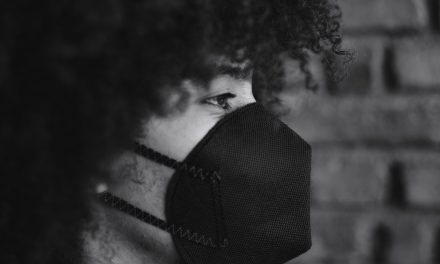Toniann Richard, CEO of Health Care Collaborative (HCC) of Missouri, joined a panel of colleagues to discuss the reasons for vaccine hesitancy across various communities and how providers can effectively communicate information. The Impact of Vaccination on Lives and Livelihoods: A People’s Dialogue was hosted by American Public Square and featured founder Allan Katz, fact checker Chris Le Beau, deputy opinion editor Batya Ungar-Sargon, and moderator Erika Blacksher. Alongside Richard, the panel also featured Andrea Perdomo-Morales and D. Rashaan Gilmore. Perdomo-Morales, a native of Guatemala, works in Wyandotte County, Kansas to improve disparities in Latinx communities. Gilmore is the founder and president and CEO of Blackout, a grassroots organization working to mobilize the Black LGBTQ+ community in Kansas City, Missouri.
Vaccine Skepticism Across Communities
Reasons for vaccine skepticism and hesitancy vary depending on a variety of factors. “It’s the politics of it. It’s unavoidable,” Gilmore said, pointing to the long history of medical racism including the Tuskegee experiments as reason for distrust among Black Americans. Perdomo-Morales added that the process of vaccine registrations and being asked to provide personal information incites fear in the Latinx community that it may be used by Immigration and Customs Enforcement (ICE) or similar entities. Throughout the pandemic, she has helped host testing and vaccine events to provide an opportunity to explain and answer questions so people can understand how their information will be used.
People in rural communities prefer individual and community choice; the challenge arises when something becomes mandatory. According to Richard, rural areas faced significant pushback on mask mandates and providers worry mandatory vaccine messaging could drive people away. She, HCC, and its Live Well Community Health Centers aim to provide information, answer questions, and allow people to make the decision to get vaccinated at their own pace. “Because we are a trusted source, that’s an easier conversation,” she said. In Gilmore’s experience, the Biden administration helped to restore some trust that will hopefully continue to grow.
Though reasons for hesitancy may vary, fears among the population regarding the vaccine, and COVID-19, are generally the same. All three panelists saw the most skepticism surrounding the Johnson & Johnson vaccine due to concerns surrounding its baby powder formula. Richard added that for this reason, messaging and communication toolkits surrounding the vaccine need to provide education first and foremost. Despite the concerns around Johnson & Johnson, however, the panelists found that people are ultimately getting vaccinated, even if they approach the process differently.
In rural Missouri, Richard has seen a difference in approach across age gaps. While 40- to 50-year-olds are taking their time to do research and look at all options, people in their late teens to early 30s are getting vaccinated simply because they want to go out and feel normal again. Richard said that contrary to much of the vaccine discourse, young and elderly people are not just getting the vaccine but are excited about it. The sense of family and the urge to connect has even overcome politics. “Patients are saying, I just want the vaccine so I can hold my grandbabies – that’s a strong incentive,” she said.
Vaccine Communication
Though the CDC provides up-to-date information regarding COVID-19 and vaccines as well as communication toolkits, the panelists pointed out that messaging depends on who you’re trying to reach. Perdomo-Morales said the CDC resources make a great starting point, but the work turns back on providers and leaders to tweak the messaging so that it resonates with the communities they serve. For example, Gilmore added, teens and 20-year-olds think they are invincible, especially having survived COVID-19 so far. “It’s crucial that messaging is tailored to speak to people where they are,” he said.
Sharing facts is important, but most people are educating themselves on the vaccine itself and may need help filling in information they might not be aware of – which is where providers and leaders step in. According to Richard, the dramatic shift in the community from little knowledge about health care to self-education to the point of pushing back against providers raised huge concern. In rural communities where word of mouth is trusted and travels fast, this misinformation messaging was a disaster. HCC uses CDC resources to help reestablish the facts as well as help schools set policies regarding when to quarantine, when to keep children home, how to navigate virtual learning, and more.
Will Vaccine Passports Help or Harm?
Because politics surrounding the vaccine are sensitive and vary between communities, the panelists have mixed emotions about a potential vaccine passport. This documentation would prove an individual is fully vaccinated, allowing them to travel, attend events, ease social gathering restrictions, among other things. Richard has seen individuals get vaccines specifically to travel but has also witnessed pushback against the requirement to be vaccinated to travel. She warned about the potential uprising from those feeling forced or shamed into being vaccinated, pointing to the reaction to mask mandates as an example. “That would be concerning,” she said, warning of a possible public initiative in protest of vaccinations if rural communities feel pressured.
The added documentation also has racial connotations within marginalized communities throughout history. Gilmore warned that we must be concerned about anything that classifies or stratifies our population. Though he understands the practical appeal of the passport, other alternative solutions should be explored. “This could become one more measure of how distanced we are between where we need care most and where it’s being provided,” he said regarding the rush to a solution that continues to spread division and distrust. “Those who are vulnerable are hurt the most.”
Perdomo-Morales agreed with Gilmore, adding that asking Latinx individuals to provide more information and documentation continues to raise concern. The two discussed the fear among people of color feeling they may be tracked or otherwise placed on a list that separates them as a group from others. Gilmore agreed, adding that these fears make the passport feel like one more way to approve or deny someone and contributes to distrust of the entire process.
After a year of unprecedented events including the COVID-19 pandemic, multiple natural disasters, and a record-breaking election, tensions are high, and politics have become increasingly difficult to balance. “People need an outlet,” Richard said. Rather than debate friends and family, Richard urges individuals and communities to take their frustrations and concerns to the policymakers who can impact change.
Recommending the Vaccine
Reliable vaccine communication is crucial to ease tensions and reduce hesitancy, especially in marginalized communities. When the pandemic started in March 2020, Perdomo-Morales and her health equity team at the Wyandotte County Health Department pivoted quickly to begin COVID-19 testing that April. They prioritized ensuring Black and Brown community members had access to testing and relied on trusted leaders to help spread reliable information. The department worked with local faith-based leaders to help disseminate information at Sunday services, knowing their congregations would believe them and would share information within their own circles.
To build trust in his own community, Gilmore relied on storytelling and personal experience. Having lost three family members to the virus, he witnessed firsthand the toll it takes and shares his story as a cautionary tale to others. He also hosts a local public radio show and interviewed a participant in a Pfizer trial about his experience; Gilmore said that was the first time the needle moved for him in terms of gaining trust in and being open to the vaccine. Though loved ones will be more convinced by someone they know and trust than politicians, he cautioned against forcing or shaming anyone into getting the vaccine. “If a person is unwilling, leave them alone,” he said, noting how vaccine-shaming has recently become a prevalent problem on social media.
Richard agreed and urged people to understand that leaders are also figuring the pandemic out as it progresses, just like everyone else. While it is reassuring to be a trusted source of information, there is a pressure that comes with it. “That’s hard,” she said. “It’s my own personal opinion yet it reflects my professional opinion in the community.” Richard said the ever-changing information and recommendations in the beginning of the pandemic, while understandable, also made it difficult to feel confident building trust as a provider. She said it’s important to keep the overall messaging surrounding vaccines consistent, even if the exact wording is tweaked for various communities. Otherwise, providers’ motivation may be questioned, weakening trust in their patients.
So What? Now What?
“In a time where equity and equality are so top of mind, it is challenging to feel like you’re staying ahead of those issues as a leader,” Richard said. In the rural space, they are working to better understand their own biases and insecurities. “COVID-19 taught us it doesn’t matter where you live or how much money you have: it can hit you and it can kill.” Gilmore agreed, adding that while perspectives surrounding the virus and vaccine vary, everyone has the same overall goal: we are all human beings who want to live and be happy. “COVID-19 was the great equalizer,” he said. With so many lingering health disparities, providers are tackling the same issues and need each other now more than ever.
“We’re all connected in many ways we didn’t realize beforehand,” Perdomo-Morales added. “We saw natural leaders step out during this pandemic to be advocates for their communities.” She and Richard were both surprised to see how their colleagues went above and beyond amid the pandemic, despite many rural hospital closures and mass exodus of staff across the nation. Looking toward the future, the panelists agree that this is not a new normal, but instead a moment to reflect where to go from here.
“It would be dangerous for us to assume that once we get through this, everything is okay again, and to forget the lessons we learned – even the difficult stuff,” Gilmore said. He fears the medical and scientific communities will forget the racial intersections of how people approach health care and their responsibility to provide honest, transparent, and unbiased information. Using the vaccine as an example, Richard added the onus is on elected officials as well. Misunderstandings surrounding the vaccine’s development and unclear communication from the government led to fear that the vaccine was rushed, causing conspiracy theories and general distrust. “Our government has a lot of work to do to get the everyday person to trust their message and trust their leaders,” Richard said. “We can do so and make an impact in the communities we serve but we need to see that at the national level as well.”
In American Public Square tradition, the panelists each summarized their message in 60 seconds following the prompt, So what? Now what? “So what – we’ve made it this far,” Richard said. “Now what – we still have a long way to go.” The panelists’ consensus remains that while we have made incredible progress in terms of vaccination efforts, the fight doesn’t begin or end with COVID-19. We must retain our health equity lens, extend the table to bring in more voices and experiences, and continue improving health and safety precautions. Overall, as Gilmore stated, we must re-examine the structure of care to ensure we never fall into this position again.
Bios for all panelists and details about the webinar are available here.








